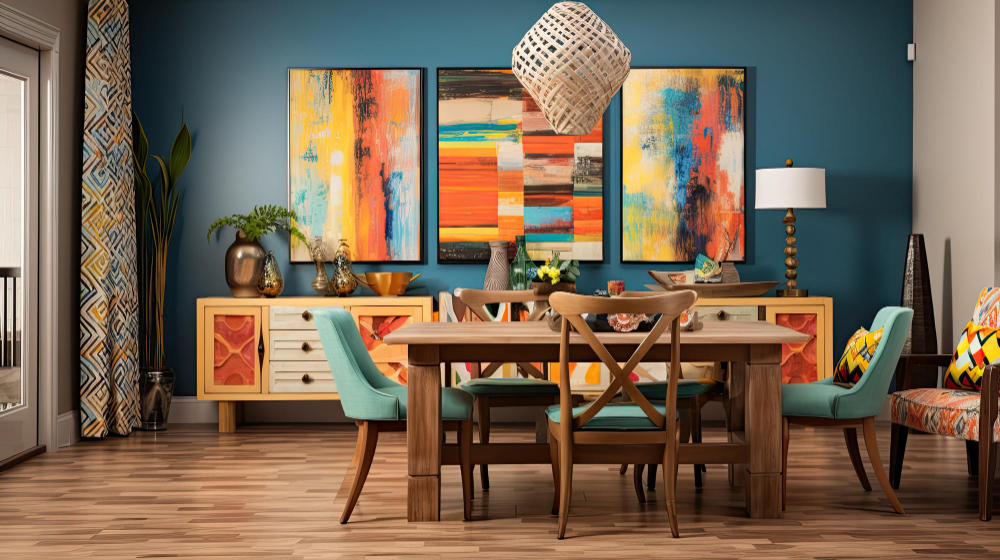Mid-century modern design, a style that emerged in the mid-20th century, remains a cornerstone in both historical and contemporary interior design landscapes. Characterized by its clean lines, organic curves, and emphasis on functionality, this design philosophy blends art and practicality, making it enduringly popular among designers and homeowners alike.
The Origins and Evolution of Mid-Century Modern Design
The mid-century modern movement began in the 1940s and continued through the 1960s, a period marked by post-war prosperity and technological advances. Architects and designers of the time, such as Charles and Ray Eames, George Nelson, and Eero Saarinen, pushed the boundaries of traditional design by incorporating new materials like plastic, plywood, and aluminum. This era was defined by a drive towards modernity, simplicity, and connection to nature.
Key Characteristics
Key features of mid-century modern design include simplicity in form, a connection with nature through large glass windows and open floor plans, and functionality without excessive ornamentation. Furniture pieces are often elevated on legs, contributing to a sense of space and lightness.
Influential Mid-Century Modern Designers and Their Legacy
Pioneers of the Movement
- Charles and Ray Eames: Best known for their innovative use of molded plywood and fiberglass, the Eames duo created some of the most iconic furniture pieces of the 20th century, including the Eames Lounge Chair and Ottoman.
- George Nelson: As the design director at Herman Miller, Nelson was instrumental in bringing modern design into American homes through pieces like the Coconut Chair and the Marshmallow Sofa.
- Eero Saarinen: Renowned for his sculptural approach to design, Saarinen’s works, such as the Tulip Chair and the Womb Chair, are celebrated for their fluidity and embrace of curves.
Their Impact on Modern Design
These designers not only shaped the aesthetics of their time but also laid foundational concepts that define what we consider modern and chic in today’s design world. Their work emphasized durability, ease of use, and timeless beauty—principles that continue to influence designers today.
How to Integrate Mid-Century Modern Elements into Your Home
Furniture Selection
Opt for iconic pieces like the Eames Lounge Chair or the Nelson Bench to serve as focal points in your living spaces. These pieces combine high function with high style, reflecting the essence of mid-century modern aesthetics.
Incorporating Natural Elements
Use natural wood, leather, and stone to echo the mid-century modern commitment to natural materials. Floor-to-ceiling windows and indoor plants can enhance the connection to the outdoors, a hallmark of this style.
Color and Patterns
While often associated with muted tones, don’t be afraid to experiment with bold colors and geometric patterns, especially in accent pieces like cushions or wall art. This can add a contemporary twist to the classic mid-century look.
The Relevance of Mid-Century Modern Design in Contemporary Settings
Versatility in Various Environments
Whether in a bustling city apartment or a spacious suburban home, mid-century modern design elements can be seamlessly integrated. Its emphasis on functionality makes it adaptable to varying living spaces and lifestyles.
Sustainability and Timelessness
Many mid-century designs are celebrated not only for their aesthetic appeal but also for their construction quality. Investing in vintage mid-century furniture can be a sustainable choice, as these pieces are durable and often increase in value.
Conclusion: Embracing the Timeless Appeal of Mid-Century Modern Design
Mid-century modern design continues to appeal to a wide audience due to its versatility, elegance, and timeless modernity. By understanding its roots and characteristics, one can thoughtfully incorporate elements of this iconic style into their own home, ensuring it remains as relevant today as it was over half a century ago.
This comprehensive guide to mid-century modern design not only explores its historical context and key features but also provides practical advice for integrating this enduring style into contemporary living spaces. As we continue to embrace these design principles, the legacy of mid-century modern design is sure to endure, influencing yet another generation of architects, designers, and homeowners.

